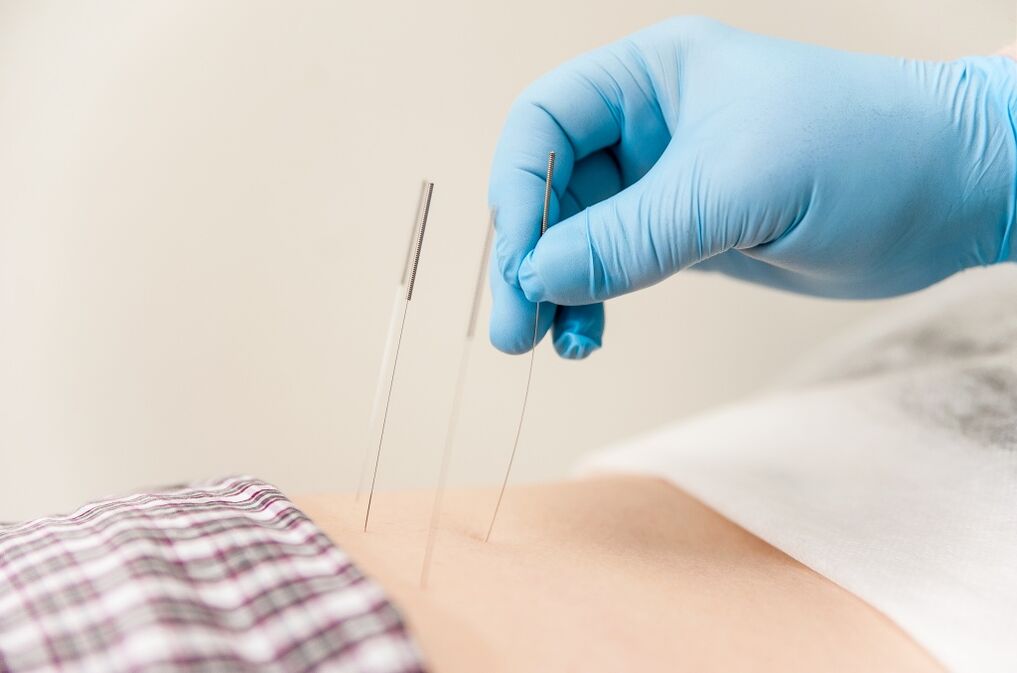Osteochondrosis is called Distrophicheesko depth disease of intervertebral joint cartilage tissue, leading to its destruction.The location of osteochondrosis in the vertebrae of the thoracic spine is called thoracic osteochondrosis.Compared to the osteochondrosis of another location - cervical or lumbar chest osteochondrosis - is less commonly diagnosed with anatomical characteristics of the chest structure.It is a relatively static structure in which the mobility of the column itself is relatively small - respectively, even with an active pathological process in intervertebral discs, the likelihood of its lesion is minimal.In the recent past, when diagnostic capabilities were limited, thoracic osteochondrosis was considered prerogative of exclusively elderly patients.It is now identified not only in young people, but even in childhood.

Why is thoracic osteochondrosis developing?
Among the causes of thoracic osteochondrosis, the following must be distinguished:
- Vertebrae and intervertebral disks pathology - hereditary and acquired as a result of various factors;
- violations of blood supply to the spine;
- Excessive or irrational physical activity in the spine (when playing sports or due to hard physical work);
- Violations of mineral metabolism in the body, deficiency of some trace elements;
- sedentary lifestyle, sedentary professional activity;
- Weakness of the back muscles, which resulted in inadequate posture and irrational distribution of the load in the spine;
- wounds.
In addition, there are several factors that can cause an exacerbation of the disease in its chronic course:
- wound;
- stress, excessive nerve tension;
- Body hypothermia - General and local hypothermia of the muscles of the back;
- Physical excess.
Why is thoracic osteochondrosis dangerous?
Thoracic spine osteochondrosis is a disease, accompanied by significant pathological changes in the vertebrae and intervertebral joints.Consequently, the first consequence of such a disease is the destruction of structures that form the spine.The result of this can be scoliosis, respiratory system pathology (pneumonia, pnemosclerosis), impaired blood circulation of internal organs, upper gastrointestinal tract diseases (pancreatitis, cholecystitis).The negative consequences of thoracic osteochondrosis can also apply to the class system.Persistent pain syndrome, characteristic of osteochondrosis, reduces quality of life and can "disguise" for other diseases, which causes inappropriate diagnoses and treatment.
How is thoracic osteochondrosis manifested?
With thoracic osteochondrosis, the symptoms are quite characteristic:
- pain - It occurs when a person is in a long position, as well as with movements, raising weights, physical effort.The constant boring pain in the area of the plates is characteristic, as well as the pain when trying to lift your hands;
- Intercostal neuralgia;
- Feeling in the chest, as a result of which deep breathing becomes difficult;
- Decreased sensitivity certain areas of the skin;
- Paresthesia - A feeling of "trackers" on the skin, burning, tingling;
- temperature decrease certain zones on the skin;
- temperature decrease leg leather, Softeness burning in them;
- Digestive disorders.
Two basic types of pain that accompany thoracic spine osteochondrosis: Dorsalgiyu (prolonged pain in the affected intervertebral cartilage area) and back (intense paroxysmal pain accompanied by muscle spasm and respiratory difficulties) are distinguished.
Osteochondrosis so called So Gastro Syndrome - Pain in epigastry, not related to meals, time of day or year.
Degree of thoracic osteochondrosis
In clinical practice, 4 degrees of thoracic spine osteochondrosis are distinguished, depending on the degree of cartilage damage and involvement in the pathological process of surrounding structures.
Thoracic osteochondrosis of the 1st degree spinal spine: The discs between the vertebrae lose their somewhat tuned elasticity, local protrusion - the protrusion may appear in the fibrous rings of the discs.
2nd degree thoracic osteochondrosis: The tuning of intervertebral discs progresses, the thoracic spine loses stability.At this stage, pain begins to worry, often neurological symptoms join it: Paresthesia, skin numbness.Cracks may appear in the fibrous ring of the intervertebral disc.
Thoracic osteochondrosis of the 3 -degree spine corresponds to the formation of intervertebral hernia.
TORACIC OSTEOCONDROSIS 4 degrees It is characterized by a complete loss between the vertebrate disk of its depreciation properties.The cut of vertebrae becomes critical, bone tissue begins to collapse.In the channels of the spine, blood vessels and nerves are violated, which leads to persistent neurological symptoms, intensive bolevom syndrome, circulatory disorders.
Diagnosis of thoracic osteochondrosis
The diagnosis of “thoracic osteochondrosis” is made based on a patient research, his examination and examination: radiography and magnetic resonance imaging.An X-ray study helps to establish the location of the spine injury, and magnetic resonance imaging is to clarify the diagnosis, exclude the presence of benign and malignant neoplasms.
Several symptoms of thoracic spine osteochondrosis are not specific - the same signs may indicate other diseases.This explains very frequent errors in the diagnosis, when the patient, for example, is treated for a long time for pancreatitis due to pain, whose true cause is mammary osteochondrosis.Therefore, comprehensive diagnoses, attracting adjacent specialists - gastroenterologists, pulmonologists - for additional patient examinations are very important.
Thoracic osteochondrosis: treatment

Given the fact that the restoration of destroyed cartilage is impossible, the effective treatment of mammary osteochondrosis is possible only in the early stages of the disease, until the cartilage has still lost its structure.Therefore, it is especially important to consult a doctor in a timely manner - when the first manifestations of pathology, discomfort in the back, insignificant pain, numbness of skin areas or their burning sensation appeared.
In the early stages of the disease, treatment comes down to taking non -narcotic painkillers, allowing pain and non -steroidal anti -inflammatory drugs that reduce the intensity of the inflammatory process in tissues and also eliminate pain.However, the main emphasis on the treatment of the early stage of thoracic spine osteochondrosis is made to receive HondoProtektorov.This is the name of a group of drugs designed to restore normal metabolism in cartilage tissue, which results in an improvement in cartilage tropism and deceleration in its destruction.
With the progression of the pathological process of non -steroid anti -inflammatory agents to relieve inflammation, as a rule, it does not become sufficient, which forces the doctor to complement cortic glucose with steroid medications.In addition, diuretics can be added to the list of medications that allow you to eliminate swelling in the roots of the offending spinal nerves and thus relieve the proper neurological symptoms and pain.The inclusion of antispasmodic medications in therapy allows you to eliminate muscle spasm, which accompanies thoracic spine osteochondrosis.
With the development of intervertebral hernia and the destruction of vertebrae bone tissue, conservative treatment loses its effectiveness, the only reasonable alternative is the surgical treatment of osteochondrosis.
Physiotherapy for Mammary Osteochondrosis
Out of periods of exacerbation, physiotherapy brings good results.Effective methods in thoracic region osteochondrosis include:
- laser therapy;
- Magnetotherapy;
- Extension - dry and wet;
- vacuum therapy;
- acupuncture;
- Farmakopunktura.
In addition, massage and manual therapy include popular and effective physiotherapeutic methods for mammary osteochondrosis.Preventive massage courses for patients with thoracic region need to pass at least twice a year.At the same time, any manipulations should be as saved as possible, exclusively outside the periods of exacerbation, not to cause exacerbation of the pathological process.

Physical Education of the Media for Toracic Osteochondrosis
An important component of the complex treatment of thoracic spine osteochondrosis is therapeutic physical education (exercise therapy). The task of the exercises is to restore intervertebral joint mobility, eliminate muscle spasm, eliminate spinal stiffness.LFK allows you to strengthen muscle corset, as well as increasing the patient's physical mobility as a whole, which is an important factor in the stimulation of blood circulation, restoration of pulmonary ventilation.
Before performing a special exercise complex, you should perform a light and warm and warm, with the aim of warming your muscles or taking a hot shower.High quality heating before classes avoid injuries.All movements must be gentle, it is necessary to avoid tilings and sharp turns that can aggravate the damage to the spine.
Thoracic spine osteochondrosis is a chronic disease that significantly reduces the patient's quality of life, dangerous of their complications.The opportune address to the competent complex and complex treatment, which began with the first signs of the disease, will help interrupt the pathological process and eliminate unpleasant symptoms.



































